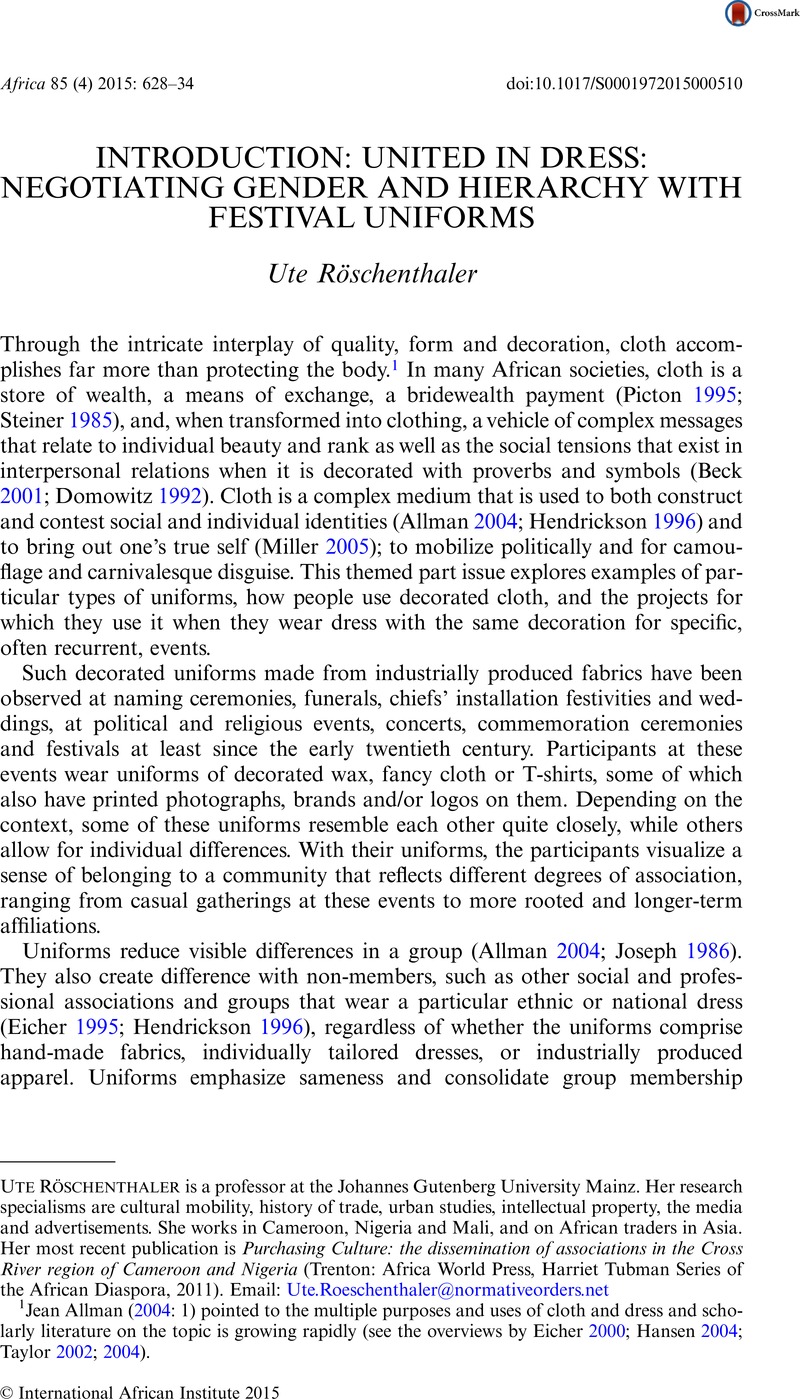Crossref Citations
This article has been cited by the following publications. This list is generated based on data provided by Crossref.
Gabriel, Marie-Christin
Lentz, Carola
and
N’Guessan, Konstanze
2020.
Embodying the nation: The production of sameness and difference in national-day parades.
Ethnography,
Vol. 21,
Issue. 4,
p.
506.
von Pezold, Johanna
and
Driessen, Miriam
2021.
Made in China, fashioned in Africa: ethnic dress in Ethiopia and Mozambique.
Africa,
Vol. 91,
Issue. 2,
p.
317.



